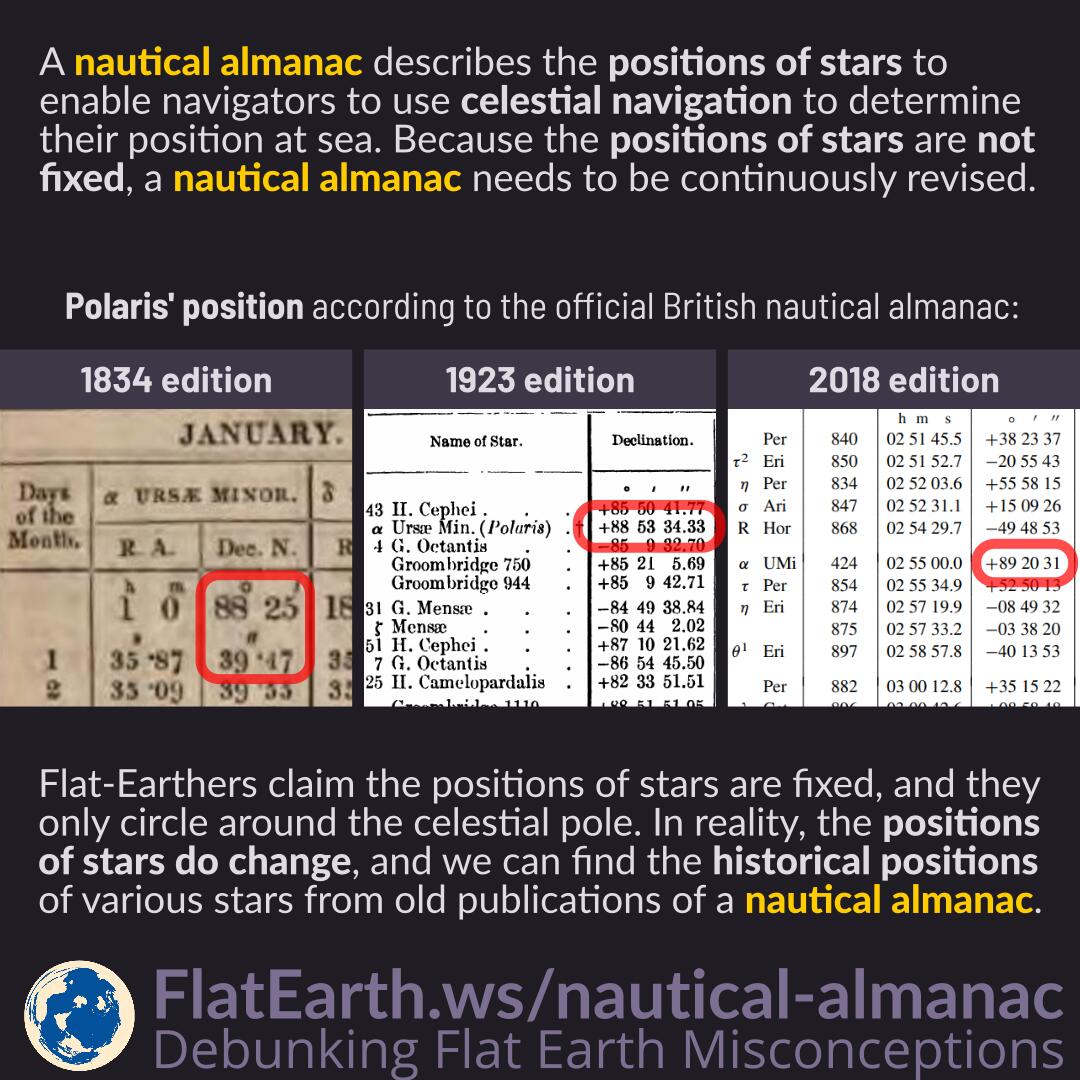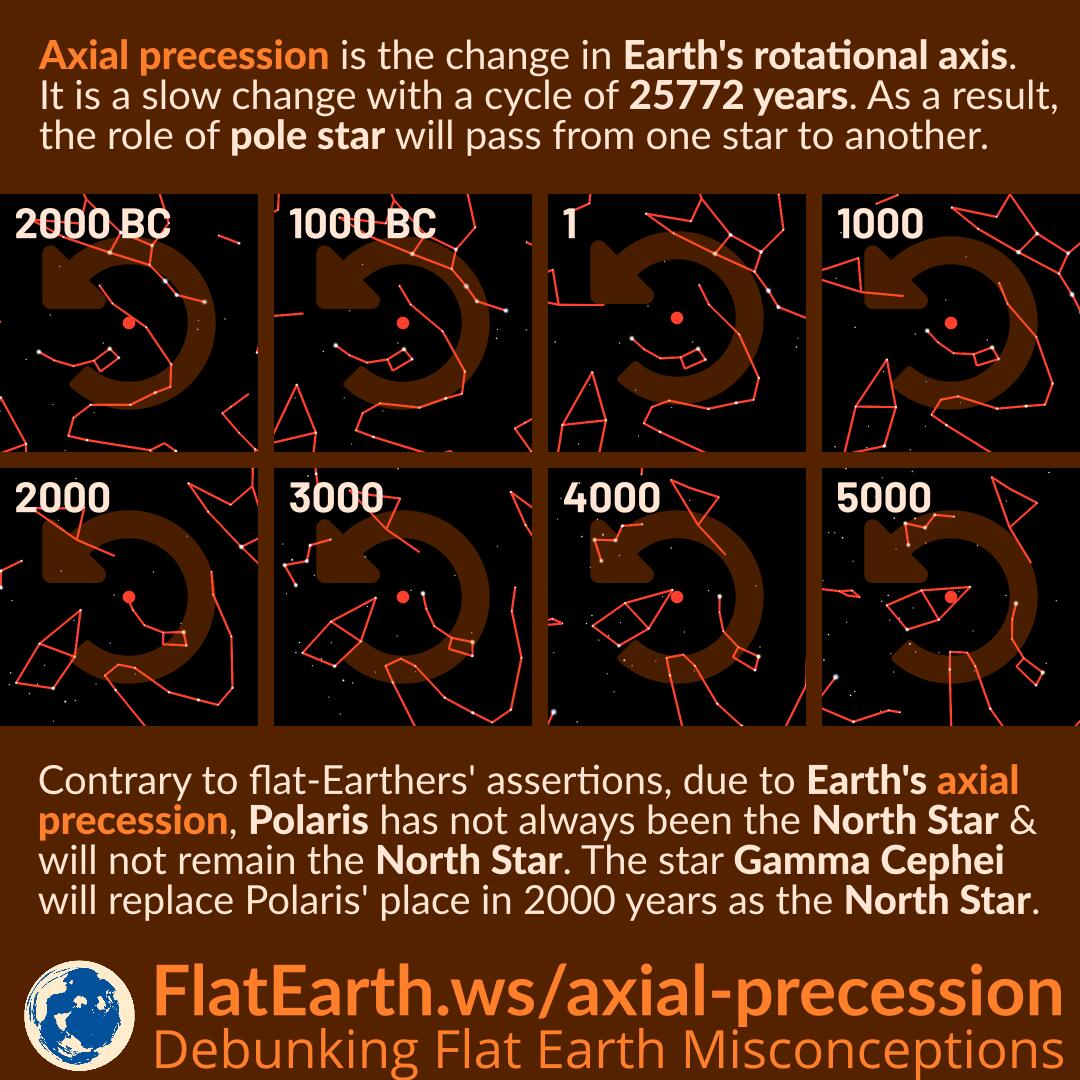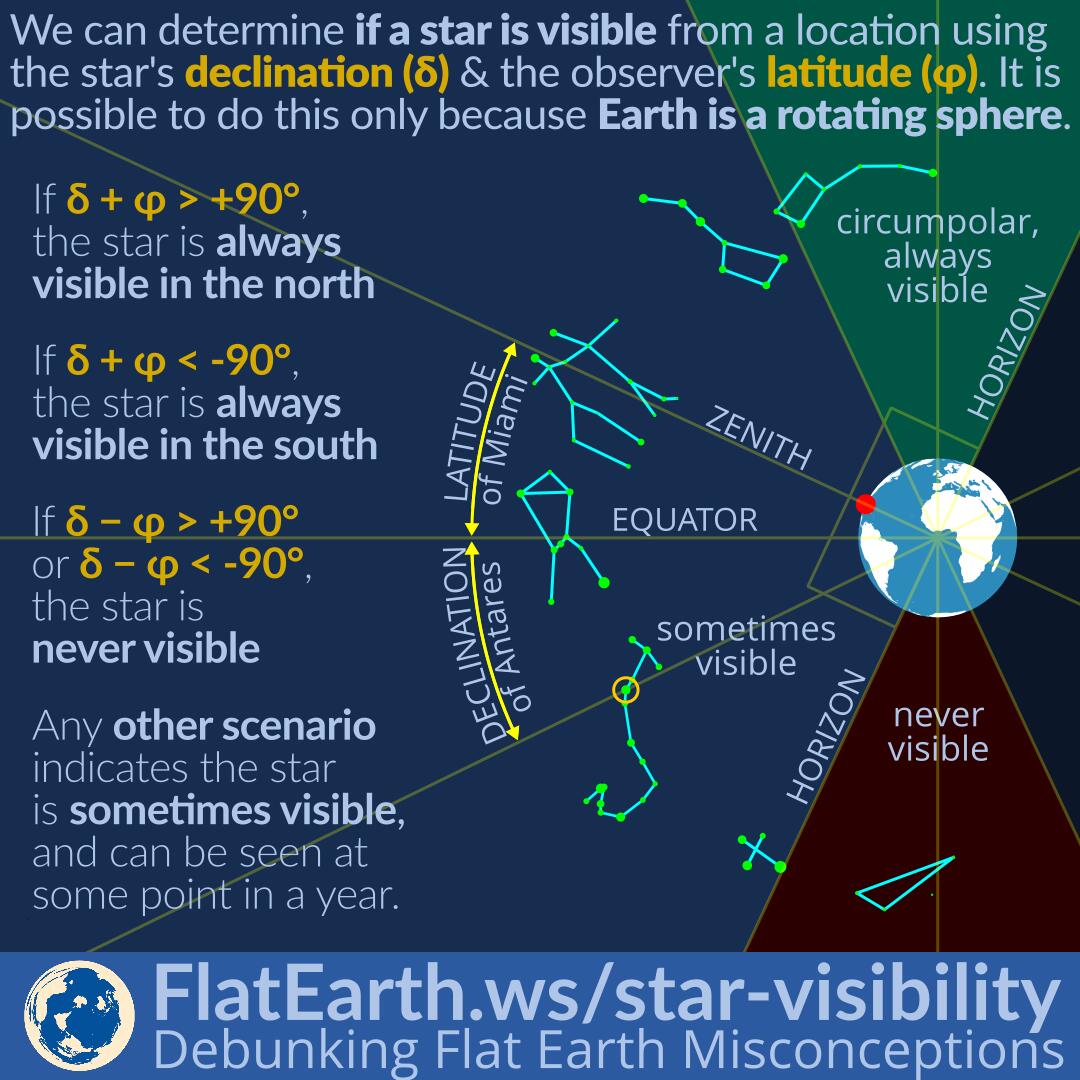A nautical almanac is a publication that describes the positions of stars to enable navigators to use celestial navigation to determine their position at sea. Because the positions of stars are not fixed, a nautical almanac needs to be continuously revised.
Flat-Earthers claim that the positions of stars are fixed, and they only circle the celestial pole. In reality, stars’ positions do change, and we can find the historical positions of various stars from old publications of a nautical almanac.





